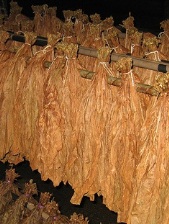Cigar Tip: Back to Basics
6 Nov 2012
Sometimes those of us who devote lots of time and energy to cigars forget that there are many, many smokers who enjoy them but aren’t nearly as involved. They may not have the time or the inclination—or both—to delve deeply into such topics as the differences in Nicaraguan tobaccos grown in various regions of the country, or a comparison of the relative merits of entubar and accordion bunching.
 No problem. After all, cigar smoking should be about enjoyment. For some, that means acquiring and evaluating lots of information. For others, it means just lighting up. But in reading various cigar forums, I know there are always newcomers confused by some of the basics. Here are a few explanations that I hope will help.
No problem. After all, cigar smoking should be about enjoyment. For some, that means acquiring and evaluating lots of information. For others, it means just lighting up. But in reading various cigar forums, I know there are always newcomers confused by some of the basics. Here are a few explanations that I hope will help.
Wrapper. This is the leaf that covers the cigar, the tobacco that you see. The varieties and origins can seem nearly infinite. Despite what you may hear, a darker wrapper does not automatically mean a stronger cigar. Maduro (Spanish for ripe or mature) wrappers darken as they’re processed and often have a sweeter characteristic.
Filler. This tobacco comprises the majority of the cigar and forms the inner component. Premium cigars are nearly always long-filler, meaning the tobacco runs the length of the cigar. Chopped, cut, or sandwich filler is usually found in less expensive cigars, and it usually consists of clippings from long-filler cigars.
Construction. There are many ways to make cigars, but the most basic categories are machine-made and handmade. Most machine-made cigars use homogenized tobacco, paper, and other components and, for my taste, these bear about as much resemblance to premium cigars as does chalk to cheese. (You can read more of my thoughts on them here.) Premium cigars are almost always hand-rolled, though that includes the use of some tools, even mechanical ones such as the Lieberman machine. Premium cigars are 100% tobacco.
Resources. Well, you’re already at the best one, right? Explore the categories at the top of this page and use the search function for whatever is on your mind. If you need more, try our Cigar University or Tobacconist University. And for those interested in history, nothing comes close to the extraordinary National Cigar Museum.
And if you have other questions about cigar basics or more advanced curiosities, please let us know in the comments below.
photo credit: Stogie Guys

 Patrick Ashby
Co-Founder & Editor in Chief
Patrick Ashby
Co-Founder & Editor in Chief Patrick Semmens
Co-Founder & Publisher
Patrick Semmens
Co-Founder & Publisher George Edmonson
Tampa Bureau Chief
George Edmonson
Tampa Bureau Chief
I often see newbies:
–flash-frying their cigar with an unnecessarily expensive torch that they hold way too close to the foot
–ashing their cigar like it was a cigarette, damaging it
–smoking way too quickly to enjoy a cigar
–continuing to assume Cubans are the best despite a mountain of evidence proving otherwise
Now guys have written articles about all of these topics, and the cigar community is better off for them. Thanks for making education a top priority.
I've always thought it would be a good idea for B&Ms to have a monthly gathering for new cigar smokers to explain the basics. Wine shops do that sort of thing all the time. It just seems like it would make good business sense. Yet I've never encountered a shop that did. Anyone out there know of a B&M that does? I'd love to interview the owner.
I've been to a shop before that was hosting Jose Blanco from (at the time) La Aurora. He did a 90-min session on cigar basics. I'm a regular cigar smoker but I found it very informative.
Haven't come across a shop owner doing this on a more routine basis.
Bobby – I went to something similar a few years back (http://www.stogieguys.com/2006/10/stogie-commentary-strike-three.html) done by Punch. I've not heard of them doing this any longer. As you say, very informative.